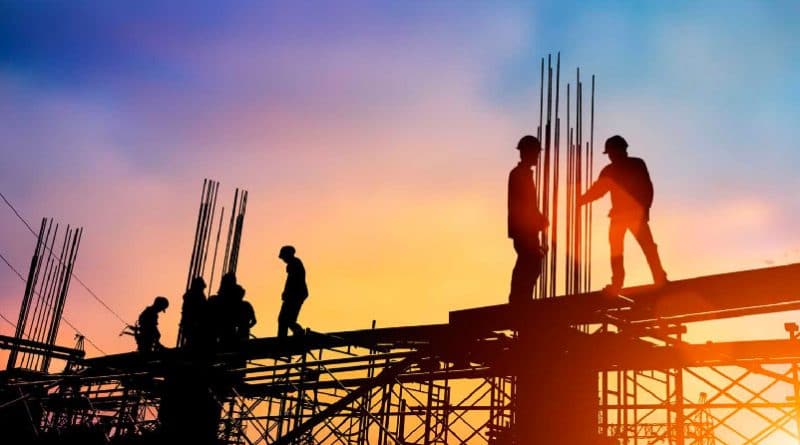Activity ramps up amid record rise in new orders
The Ulster Bank Construction Purchasing Managers’ Index® (PMI®) – a seasonally adjusted index designed to track changes in total construction activity – posted 66.4 in May, up sharply from 49.3 in April and above the 50.0 no-change mark for the first time since the imposition of the lockdown at the start of the year. Index readings above 50 signal an increase in activity on the previous month and readings below 50 signal a decrease. In fact, activity increased at the sharpest pace since February 2016 and the second-fastest on record.
The lifting of COVID-19 restrictions was undoubtedly the key factor behind the rise in activity, but the release of pent-up demand also highlighted.
 Commenting on the survey, Simon Barry, Chief Economist Republic of Ireland at Ulster Bank, noted that: “The latest results of the Ulster Bank PMI survey show that the Irish construction sector staged a very strong bounce-back in activity in May. Following the pronounced lockdown-related weakness experienced in the first quarter of the year, construction activity is now benefiting from the wider re-opening of the sector which took effect early last month. This was clearly reflected in the headline PMI of overall activity which surged ahead last month to reach one of the strongest readings in the survey’s 21-year history consistent with a vigorous rebound, albeit from very low lockdown-restrained levels. The pick-up was broadly-based with all three sub-sectors recording very sharp improvement in activity trends in May, though particular strength was evident in residential activity where the Housing PMI reached a new record high.
Commenting on the survey, Simon Barry, Chief Economist Republic of Ireland at Ulster Bank, noted that: “The latest results of the Ulster Bank PMI survey show that the Irish construction sector staged a very strong bounce-back in activity in May. Following the pronounced lockdown-related weakness experienced in the first quarter of the year, construction activity is now benefiting from the wider re-opening of the sector which took effect early last month. This was clearly reflected in the headline PMI of overall activity which surged ahead last month to reach one of the strongest readings in the survey’s 21-year history consistent with a vigorous rebound, albeit from very low lockdown-restrained levels. The pick-up was broadly-based with all three sub-sectors recording very sharp improvement in activity trends in May, though particular strength was evident in residential activity where the Housing PMI reached a new record high.
“A new survey high was also registered in the New Orders index, with firms reporting that rapid growth in new business was underpinned by the lifting of restrictions and the associated release of pent-up demand. In turn, the much-improved prospects for demand are leading firms to increase their hiring activity, with the survey’s employment index pointing to the fastest pace of job creation in over 2 years. It wasn’t all good news in the latest survey results, however. Notably, the rate of input cost inflation rose to a new record high in May amid further pressure on supply chains.
“Higher prices and transportation delays were linked to global material shortages and to Brexit. So, as undoubtedly encouraging as the important signs of revival in activity are, this month’s survey also again highlighted that the sector does continue to face some important challenges.”
Activity up across all three categories
All three broad categories of construction saw increases in activity during May, led by housing which posted a new record expansion. The rate of growth in commercial activity hit a three-year high, while civil engineering work increased to the greatest extent since March 2016.
Record rise in new orders
The lifting of restrictions led to a surge in new orders during May, with the rate of expansion the fastest in the 21-year survey history.
Rate of job creation quickens
Companies responded to greater workloads by ramping up employment and purchasing activity. Staffing levels increased for the second month running, and at the fastest pace since April 2019. Meanwhile, the rise in input buying was the sharpest on record.
The marked increase in demand for inputs added to already severe pressure on supply chains midway through the second quarter. Transportation delays caused by Brexit and global shortages of materials were again factors leading to longer delivery times. The latest lengthening of lead times was the most pronounced in four months and one of the greatest on record.
The rate of input cost inflation surged to a new record high and was by far the sharpest in 21 years of data collection. Close to 73% of respondents signalled that their input prices had risen over the month with copper, plastics and steel among the items most widely mentioned as costing more.
The further reopening of the economy and continued release of pent-up demand supported ongoing confidence among construction firms that activity will increase over the coming year. Sentiment was little-changed from the levels seen in March and April, remaining much stronger than the series average. More than 60% of firms expressed an optimistic outlook in May, with just 13% of respondents expecting a drop in activity.

